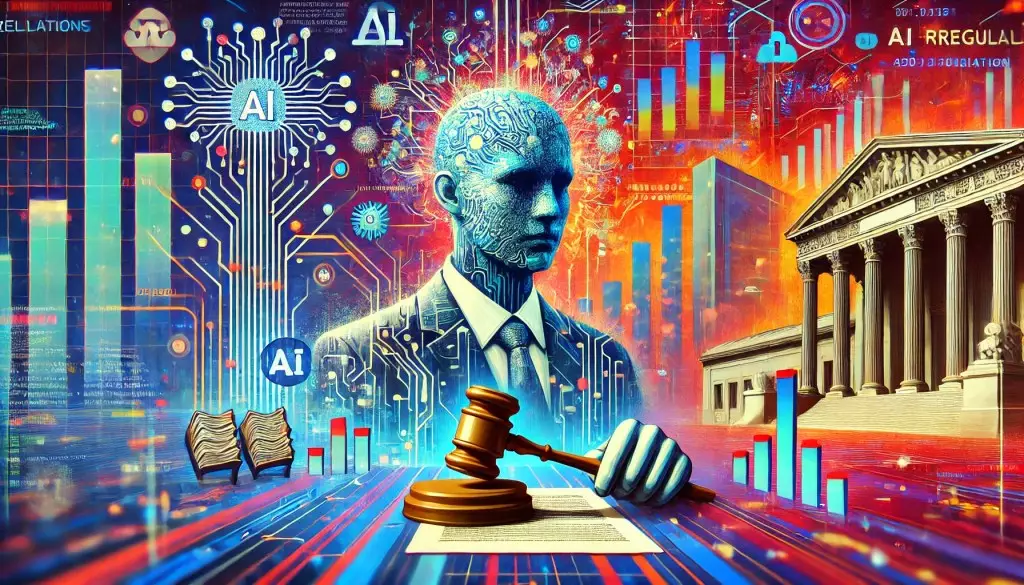The evolving landscape of artificial intelligence (AI) in the United States has taken a significant turn following a shift in regulatory strategy under the Trump administration. Previously, an Executive Order issued by President Joe Biden aimed to introduce structured rules on AI development and deployment. Following this, the current administration signaled a move away from stringent regulation, favoring a hands-off approach that has ignited debates among industry leaders and policymakers alike.
During a gripping Senate Committee hearing filled with insights from high-profile tech executives, the call for expedited infrastructure development around AI was loud and clear. Prominent figures like OpenAI’s Sam Altman and AMD’s Lisa Su voiced urgent pleas to policymakers, urging them to accelerate the permitting processes required for building data centers and other essential infrastructure. Their message was straightforward: Quickening this process is integral to maintaining America’s competitive edge, particularly in comparison to China, which is rapidly advancing in the field.
Challenges and Opportunities in AI Development
The necessity for an advanced technological framework has never been more apparent. Altman shared that America must lead the way in both intelligence and energy sustainability. He posited that the next decade will determine the global balance of power based on technological capabilities—urging that “abundant intelligence” dovetailed with “abundant energy” is paramount for progress.
Yet, the discussions also surfaced the stark reality that the United States is lagging in several critical areas, including the workforce available to support such ambitious projects. The need for skilled labor, particularly in technical fields, was emphasized by executives advocating for streamlined immigration policies for talent in software and engineering. This acknowledgment of talent shortages demonstrates an openness to a globalized workforce and reinforces the understanding that international collaboration is vital for sustained innovation.
Moreover, the implications of the Biden-era Chips and Science Act were also scrutinized; while it aimed to boost domestic semiconductor production, companies are facing slow manufacturing processes and rising costs. The urgency of establishing more data centers and chip production facilities cannot be overstated, as these components form the backbone of any potential AI revolution.
Creating a Regulatory Sandbox
The Senate committee raised an interesting proposal by Senator Ted Cruz—creating a regulatory “sandbox” specifically for AI. This approach aims to allow companies to innovate without the overhang of immediate regulatory scrutiny while still ensuring that industry standards are established. The concept hinges on fostering an environment where new ideas can flourish under the supervision of regulatory bodies that are willing to learn in tandem with technological advancements.
Microsoft’s presence at the hearing was particularly impactful, with Vice Chair Brad Smith emphasizing the importance of a collaborative ecosystem for innovation. He stated, “We’re all in this together,” reinforcing the concept that without a multi-faceted approach to both infrastructure and regulation, innovation could stall. The infrastructure, including power plants and chip manufacturers, is necessary not only for survival but for thriving in a highly competitive global market.
The Global Nature of AI
Yet, while the executives underscored the importance of domestic growth, they were unambiguous in recognizing that a burgeoning AI industry cannot exist in isolation. Policies around international access to AI capabilities are fundamental for the United States to maintain its leadership. Smith argued for the necessity of reaching a broader array of global markets, advocating for the removal of restrictive export caps that limit American AI products’ reach.
Such sentiments reveal a fundamental shift in thinking among industry leaders—there is a collective awareness that to remain ahead in AI, America must embrace internationalization. This perspective runs counter to a purely isolationist approach that champions domestic superiority without regard for global trends and demands.
AI Diffusion: A Call to Action
As the conversations within the Senate hearing unfolded, the notion of “AI diffusion” emerged as a linchpin. This concept encapsulates the urgency to implement AI solutions across sectors to enhance productivity and drive economic growth. The crux of this argument is that the quicker generative AI can be adopted across the American economy, the better positioned the nation will be in high-stakes global competition.
Simultaneously, a significant development occurred during the hearing when the Commerce Department announced revisions to limitations on chip exports, which had previously restricted access to a number of countries worldwide. This revelation marked a potential turning point, signaling a more adaptable export policy that recognizes the need for global partnerships in technology advancing.
While the executives expressed some measure of caution regarding excessive regulatory frameworks, they also highlighted the need for standards that enable smooth operations without stifling innovation. Striking the right balance will be critical for the path forward in this ever-accelerating technological race.
The interplay between the promise of AI and the responsibilities of regulation presents a complex landscape for America. Policymakers must navigate these waters judiciously, balancing the imperatives of innovation while ensuring that ethical considerations are integral to the growth of technology that is poised to redefine the fabric of society. The stakes are high, and the future trajectory of AI in America is as uncertain as it is exhilarating.


Leave a Reply